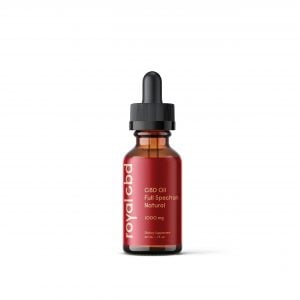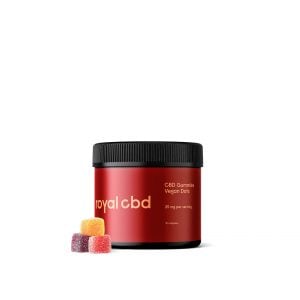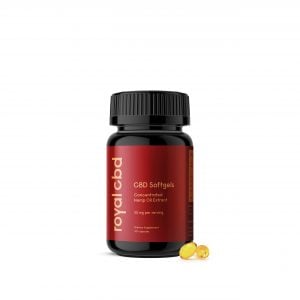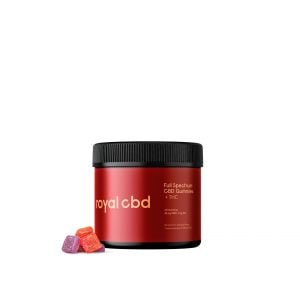A significant number of users report positive changes in sleep due to using cannabis.
Some swear by cannabis as a remedy for getting to sleep faster, while others tout it for helping them stay asleep longer and reduce nightmares.
But how does cannabis affect our dreams? Is there a scientific explanation for this phenomenon?
In this article, we cover several different ways individual cannabinoids can impact each stage of the sleep cycle and explain whether they really make dreams more vivid.
You’ll also find out which ones are most likely to help you get that much-needed night of undisturbed sleep.
How Does Cannabis Affect Your Dreams?
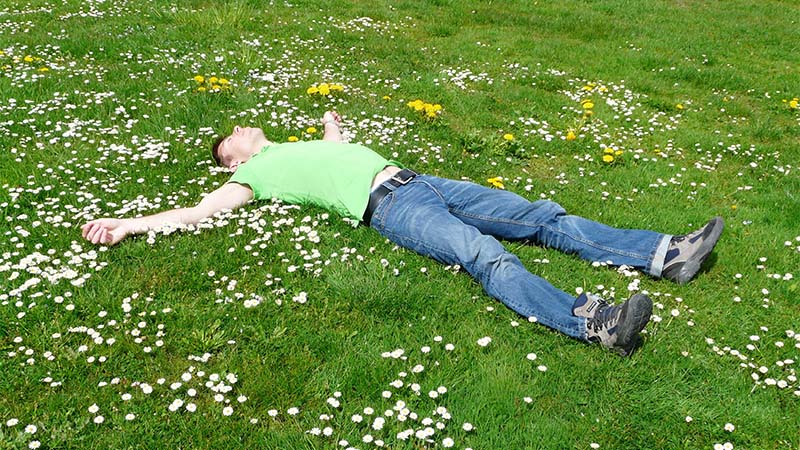
THC and other psychoactive cannabinoids reduce the occurrence of dreams. However, when you cease your use of marijuana or THC, these dreams usually come back with much greater intensity. People who stop using cannabis for sleep often report substantial changes in their dreams for a few days.
On the other hand, non-intoxicating cannabinoids like CBD or CBG may actually give you more realistic and memorable dreams.
There are several different ways in which cannabinoids affect your dreams. The answer points to CB1 and CB2 receptors in the endocannabinoid system (ECS).
The ECS is your master intercellular communication network that is the main regulatory system engaged in balancing other systems and organs throughout the body.
When it comes to sleep and dreams, the ECS is responsible for controlling the following functions:
- Hormones
- Body temperature
- Sleep and dreaming
Cannabis-derived cannabinoids interact with the ECS; that’s why you get high from THC and CBD helps you alleviate stress and physical discomfort, and aid sleep patterns.
Until recently, people used cannabinoids in the whole-plant form. But thanks to technological advancements, you can now use isolated cannabinoids and choose which ones you want — or even blend them to achieve specific effects e.g. for sleep support or to reduce nightmares.
So, while cannabis as a whole can impact dreams, here’s how individual cannabinoids do it.
How Does CBD Affect Your Dreams?
CBD may increase the duration of your dreams and make them more vivid or intense.
CBD isn’t a psychotropic or intoxicating form of cannabis, but it does influence your sleep patterns.
For example, low doses of CBD may enhance energy and focus, while higher doses reduce blood pressure and can make you feel sleepy.
CBD also has an indirect impact on sleep. Namely, it reduces physical discomfort and improves your resistance to stress, resulting in deeper rest.
How Does CBG Affect Your Dreams?
CBG improves your ability to remember dreams; it can also make them more vivid. CBG is short for cannabigerol, also known as “cannabinoid stem cell.” This compound is less popular than other cannabinoids because it’s difficult to achieve high yields from normal farming.
According to some users, CBG helps induce deep sleep without interrupting the REM stage the way THC usually does. Others praise it for helping counteract their sleep problems.
That’s anecdotal evidence, though. More studies are needed to conclude the supposed sleep benefits of CBG.
How Does Delta 9 THC Affect Your Dreams?
Delta 9 THC may reduce the frequency and intensity of dreaming.
Delta 9 is the standard form of THC, the most popular one. It works by attaching to the CB1 receptor of the ECS.
A fair share of people uses high-THC cannabis (marijuana) to combat insomnia and nightmares, and increase the time they spend in the deep sleep stage.
It’s true that THC decreases sleep latency (the time you need to fall asleep); it also extends the deep sleep stage while suppressing the REM phase (the dream state). Researchers are warning that despite being a good short-term solution, THC could impair sleep quality long-term, although more studies are needed to determine this.
Although THC may reduce the intensity and frequency of nightmares, some users report bizarre dreams after they use cannabis before going to bed.
How Does Delta 8 THC Affect Your Dreams?
Delta 8 THC is similar to delta 9, but it has only about 50% of its psychoactive potency. Delta 8 binds with the CB1 and CB2 receptors of the ECS, and while there isn’t enough research on its impact on sleep, the effects seem to be comparable to delta 9.
When taking delta 8 THC for sleep, you may expect reduced dream frequency and intensity. Delta 8 also leads to more of a physical buzz than delta 9, so it may positively impact your sleep if you struggle with tension, strains, and aches.
How Cannabinoids Affect Different Stages of Sleep
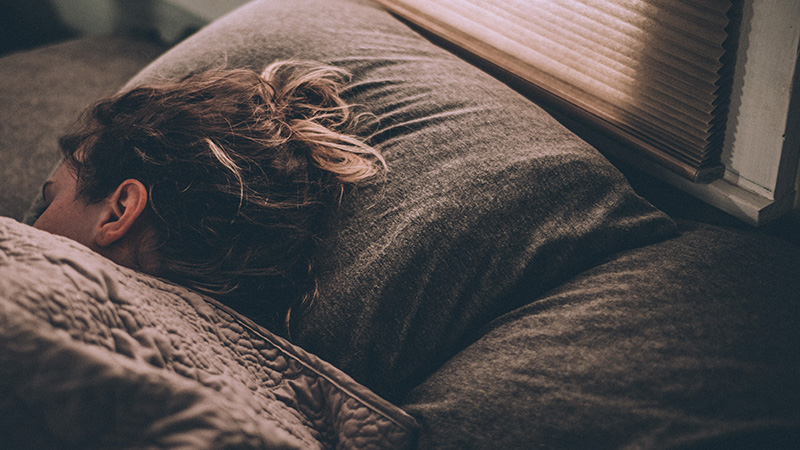
To understand how cannabis affects dreams, you need to know the general sleep cycle and how it corresponds with dreaming.
In essence, sleep breaks down into two stages:
- Non-REM: non-rapid eye movement
- REM: rapid eye movement
REM is known as the sleep stage, so it’s easy to understand how it works. But when you go further down the rabbit hole, you’ll notice that non-REM sleep has 4 phases.
Each phase does something different to your sleep cycle, starting with phase 1 (shallow sleep) and leading to phase 4 (deep sleep). After that, your brain enters the REM sleep, and once through, you return to phase 2 of the non-REM phase, and the process spins like this 4-6 times per night.
Cannabinoids affect your sleep in general, but their specific impact varies depending on how much you consume. It can affect the duration and productivity of each sleep stage.
Here we elaborate on different phases of sleep — and how cannabis affects them.
1. Stage 1 (Non-REM Sleep)
Also known as the transition phase, this stage is the lightest level of sleep. It lasts only a few minutes and involves the shifting of brain waves from normal wakefulness to sleep brain waves.
The body and muscles may twitch during this phase (that’s common), and sometimes, there are small eye movements.
This is the stage where the conscious mind is starting to detach from environmental stimuli, such as lights and sounds.
2. Stage 2 (Non-REM Sleep)
Following stage 1, stage 2 non-REM sleep leads to deeper rest. By this time, the body has mostly doesn’t react to sensory input, so you won’t easily wake up due to loud sounds or abrupt environmental changes.
As the body tunes in with this stage, there’s no more eye movement and muscular twitching. The heart rate slows down — leading to a drop in body temperature.
3. Stage 3 (Non-REM Sleep)
This stage is called ‘slow-wave sleep.” It’s even deeper than the previous phase and leads to more restorative sleep when you get enough of it. At this point, the muscles are completely relaxed and your brain waves slow down, leading to a rhythmic breathing pace.
It’s difficult to wake up during this stage of sleep; if you do, it can disrupt your energy, making you feel fatigued and puzzled the next day.
According to one study, the use of THC or CBD products may decrease the duration of stage 3 sleep.
4. Stage 4 (Deep Sleep)
This is the most important stage if you want to wake up refreshed and charged with energy. The muscles are relaxed, and the body triggers regenerative processes, healing its cells and tissues. Since both the body and mind are at full rest, brain waves are also slower than in each of the earlier phases.
Using cannabis before sleep appears to reduce the time you need to fall asleep and increase the duration of stage 4.
5. Stage 5 (REM Sleep)
The REM stage is when you dream. It occurs once you’ve passed through the four non-REM sleep stages.
During REM sleep, you begin to breathe rapidly and irregularly. Your eyes also move at the same fashion (now you get the Rapid Eye Movement name).
Unlike the previous stages, the heart rate and blood pressure go up during REM sleep. Brain waves are also accelerated, becoming similar to those during wakefulness.
Cannabis affects dreams, but so do temperatures. In cooler climates, REM sleep is limited since the body struggles with temperature regulation during this stage. The body enters a paralysis-like state, making it impossible to act out during dreams. Rather, you may experience dreams without going through the motions.
Many researchers suggest that the brain consolidates and organizes information during dreaming as a way of assimilation. Although both non-REM and REM sleep are responsible for forming memories, REM is more linked to creativity, learning recall and problem-solving.
Does Reducing Cannabis Use Give You Intense Dreams?
Now that you know how cannabis and individual cannabinoids affect dreams, you’re probably curious if ceasing your cannabis use may lead to more intense dreams.
Yes, and it’s actually part of withdrawal from marijuana along with restlessness and increased sleep latency.
Users who take tolerance breaks frequently report having memorable, vivid, or particularly crazy dreams (often nightmares). This could be due to marijuana’s ability to suppress REM sleep.
If nothing suppresses your REM sleep any longer, you begin to dream again. Although your dreams may not be more intense than before marijuana use, it’s possible that your subjective perception of the dreams will be more clear when you compare it with a time when you experienced little to no dreaming.
Regular marijuana users treat their altered REM sleep as the baseline: normal dreaming doesn’t occur or is ‘muted’ by THC. That’s why marijuana users taking a break from smoking often report having disturbingly intense dreams on the verge of nightmares.
While marijuana won’t directly cause nightmares, cessation may result in an influx of dream activity, making you feel overwhelmed with that transition period.
How Cannabinoids Help with Sleep
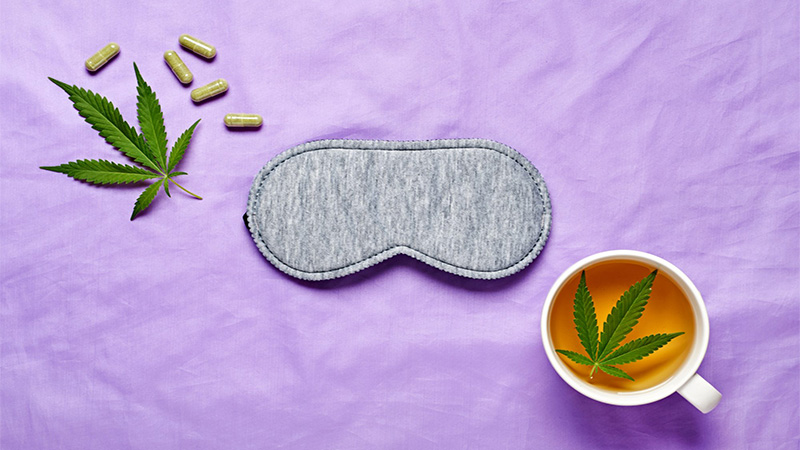
Current consensus about the way cannabis affects dreams includes ideas about it making you sleepy — which is true.
Certain cannabis strains or products tend to cause sedation and tiredness. Although THC meddles with REM sleep, some cannabinoids like CBD can modulate its activity and result in more balanced effects on dreams.
Here’s how people use different cannabinoids to help with sleep:
THC for Insomnia
As previously mentioned, the relaxing and sedative properties of cannabis may make it easier to fall asleep, which is a common problem among people with insomnia. Although the effects of THC on dreams are complex and yet to be fully understood, many users use THC as an acute way of reducing sleep latency. Another way THC may help with insomnia is by extending the time you spend in the stage of the deepest non-REM sleep.
THC for PTSD Nightmares
Some studies highlight THC as a potential treatment for individuals with PTSD who experience nightmares due to their condition.
Since THC reduces the time spent in the REM stage, PTSD patients may experience shorter, fewer, or less intense nightmares.
CBD for REM Disruptions
Preliminary studies show that CBD and dreams are closely related. One study on Parkinson’s patients showed that CBD reduced REM sleep disruptions caused by tremors and vocalization.
However, that’s just one study; we need more clinical research to rule out how CBD affects not only dreams but also the non-REM phases.
CBD for Healthy Sleep Cycles
CBD isn’t a sedative on its own. Instead, it modulates the activity of your endocannabinoid system to balance the physiological and mental functions. As a result, you can optimize your sleep cycles as well as address some issues that block you from experiencing that deep, restorative sleep.
Some CBD supplements are formulated for specific health needs. If you want to promote sleep cycles, you can choose products infused with melatonin. It’s your natural sleep hormone that – along with cortisol – has a profound impact on your sleep quality and how you perform during the day.
Final Verdict: Does Cannabis Impact Dreams?
Yes, it does — on many levels.
Cannabinoids are commonly used to support sleep cycles, especially for those having a hard time feeling well-rested.
However, heavy marijuana use can negatively impact your REM sleep, especially if you haven’t had vivid dreams or nightmares beforehand.
The ultimate impact of cannabis on dreams depends on the ratio between specific cannabinoids in your product; it also changes with your patterns of use, so as long as you keep your marijuana use in moderation, withdrawals should be mild.
Other cannabinoids that support healthy sleep cycles are CBD and CBG. CBD can be a versatile tool for enhancing your rest quality and energy levels after waking up. It can also reduce stress, and physical discomfort, and lower your blood pressure — all of which may positively affect your sleep routine.
Each user will have a different experience with using cannabinoids for sleep, so you’ll need to experiment to find your perfect match.
Sources:
- Edwards D, Filbey FM (2021) Are sweet dreams made of these? Understanding the relationship between sleep and cannabis use, Cannabis and Cannabinoid Research X:X, 1–12.
- Zhang, J., Zhang, L., Chang, Y., Gu, Q., Zhang, J., Zhu, Z., … & Han, J. (2020). The endocannabinoid system contributes to memory deficits induced by rapid-eye-movement sleep deprivation in adolescent mice. Neuroscience, 433, 174-183.
- Babson, K. A., Sottile, J., & Morabito, D. (2017). Cannabis, cannabinoids, and sleep: a review of the literature. Current psychiatry reports, 19(4), 1-12. [3]
- Carr, M., Borcsok, R., Taylor, M., Segust, S., Pigeon, W., & Bradshaw, C. (2020). 0159 Reduced REM Sleep Percent in Frequent Cannabis Versus Non-Cannabis Users. Sleep, 43, A62-A63. [4]
- Nicholson, A. N., Turner, C., Stone, B. M., & Robson, P. J. (2004). Effect of Δ-9-tetrahydrocannabinol and cannabidiol on nocturnal sleep and early-morning behavior in young adults. Journal of clinical psychopharmacology, 24(3), 305-313. [5]
- Schierenbeck, T., Riemann, D., Berger, M., & Hornyak, M. (2008). Effect of illicit recreational drugs upon sleep: cocaine, ecstasy and marijuana. Sleep medicine reviews, 12(5), 381-389. [6]
- Allsop, D. J., Norberg, M. M., Copeland, J., Fu, S., & Budney, A. J. (2011). The Cannabis Withdrawal Scale development: patterns and predictors of cannabis withdrawal and distress. Drug and alcohol dependence, 119(1-2), 123-129. [7]
- Abizaid, A., Merali, Z., & Anisman, H. (2019). Cannabis: A potential efficacious intervention for PTSD or simply snake oil?. Journal of psychiatry & neuroscience: JPN, 44(2), 75.
- Suraev, A., Grunstein, R. R., Marshall, N. S., D’Rozario, A. L., Gordon, C. J., Bartlett, D. J., … & Hoyos, C. M. (2020). Cannabidiol (CBD) and Δ9-tetrahydrocannabinol (THC) for chronic insomnia disorder (‘CANSLEEP’trial): protocol for a randomized, placebo-controlled, double-blinded, proof-of-concept trial. BMJ open, 10(5), e034421.
